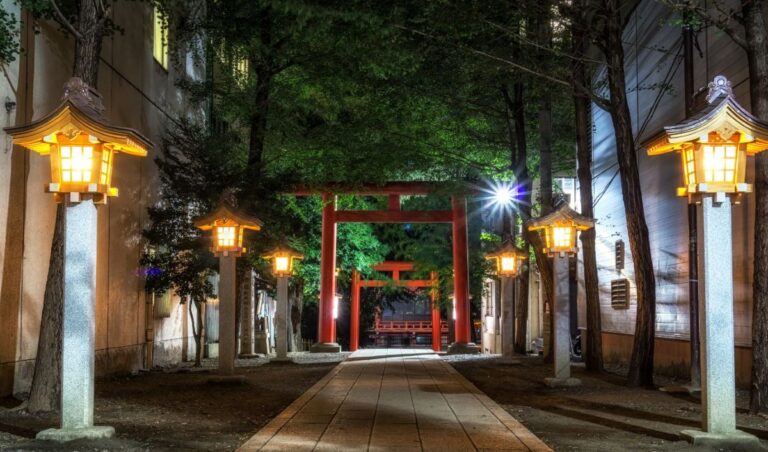In 2023, travelers exploring Japan will find a treasure trove of historical sites to visit. From the bustling streets of Tokyo to the serene landscapes of Hiroshima and Kyoto, there are countless temples, shrines, and castles that offer a glimpse into the country’s vibrant past.
The Sensoji Temple, Meiji Jingu Shrine, and Imperial Palace in Tokyo represent different periods of Japanese history, while the Hiroshima Peace Memorial Park and Itsukushima Shrine in Hiroshima commemorate the city’s tragic past.
With iconic landmarks like Osaka Castle, Nagoya Castle, and Matsumoto Castle, history buffs will be in awe. Nara’s Todaiji Temple and Kasuga Taisha showcase Japan’s religious heritage.
Get ready to Enjoy Japan’s rich history as you explore the best historical sites in 2023.
Key Takeaways
- Tokyo offers a rich cultural experience with its ancient temples and shrines such as Sensoji Temple and Meiji Jingu Shrine, as well as the grand Imperial Palace.
- Hiroshima boasts significant historical sites like the Hiroshima Peace Memorial Park and Itsukushima Shrine, which is famous for its red O-torii gate and picturesque location on Miyajima island.
- Kyoto is home to iconic temples and shrines like Kinkakuji Temple and Fushimi Inari Shrine, as well as historical landmarks like Nijo Castle and Ginkakuji (Silver Pavilion).
- Japan’s castles, including Himeji Castle, Osaka Castle, Nagoya Castle, Kanazawa Castle, and Matsumoto Castle, showcase the country’s rich architectural heritage and offer panoramic views of their surroundings.
- Nara features the impressive Todaiji Temple, known for housing the Great Buddha statue, and the serene Kasuga Taisha shrine with its beautiful lantern-lined pathways.
- Other notable historical sites in Japan include Izumo Taisha in Shimane, Byodoin Temple in Kyoto, Shimogamo Shrine in Kyoto, and Kenrokuen Garden in Kanazawa, each offering unique cultural and natural attractions.
Sensoji Temple in Tokyo

The Sensoji Temple in Tokyo is the oldest and most significant temple in the city, founded in 628 AD. It is famous for its Kaminarimon Gate, a massive red gate adorned with a giant lantern, which serves as the entrance to the temple complex.
The temple complex itself is a treasure trove of spiritual and cultural wonders, featuring various shrines, stunning gardens, and a majestic pagoda. Visitors can explore the different shrines dedicated to different deities, take in the tranquility of the meticulously maintained gardens, and marvel at the intricate architecture of the pagoda.
The Sensoji Temple offers a glimpse into Japan’s rich religious heritage and provides a serene and peaceful sanctuary amidst the bustling streets of Tokyo, making it a must-visit destination for those seeking a spiritual and cultural experience.
Meiji Jingu Shrine in Tokyo

Located in Tokyo, the Meiji Jingu Shrine is a Shinto shrine dedicated to Emperor Meiji and Empress Shoken. It is known for its beautiful architecture and tranquil inner garden. The shrine was built in 1920 and is made of cypress using traditional Japanese joinery techniques.
The shrine’s inner garden features iris flowers that were planted by Empress Shoken herself. This serene and peaceful garden provides a perfect escape from the bustling city.
The Meiji Jingu Shrine holds great cultural significance for the Japanese people and is a popular destination for locals and travelers alike. Visitors can explore the shrine’s grounds, participate in traditional rituals, and admire the stunning architecture.
The shrine’s tranquil atmosphere and beautiful surroundings make it a must-visit for anyone seeking a deeper understanding of Japanese spirituality and history.
Imperial Palace in Tokyo
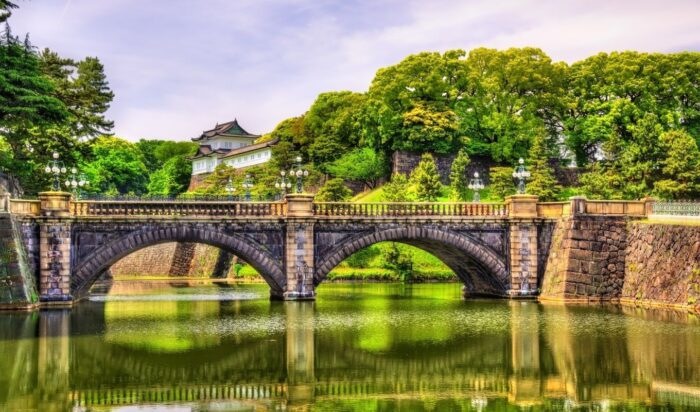
Surrounded by moats and walls, the Imperial Palace in Tokyo serves as the primary residence of the Emperor of Japan. This majestic palace represents the grandeur and history of ancient Japan.
Built on the former site of Edo Castle, the Imperial Palace showcases the enduring legacy of the country’s imperial family. While the interior of the palace is not open to the public, visitors can explore the Tokyo Imperial Palace East Gardens, which offer a glimpse into the palace grounds. The gardens are adorned with beautiful cherry trees, serene ponds, and meticulously manicured landscapes.
As one walks through the gardens, the moats, walls, and guardhouses still intact, it becomes evident that the Imperial Palace is not just a residence, but a symbol of Japan’s rich cultural heritage and the enduring spirit of its people.
Hiroshima Peace Memorial Park in Hiroshima
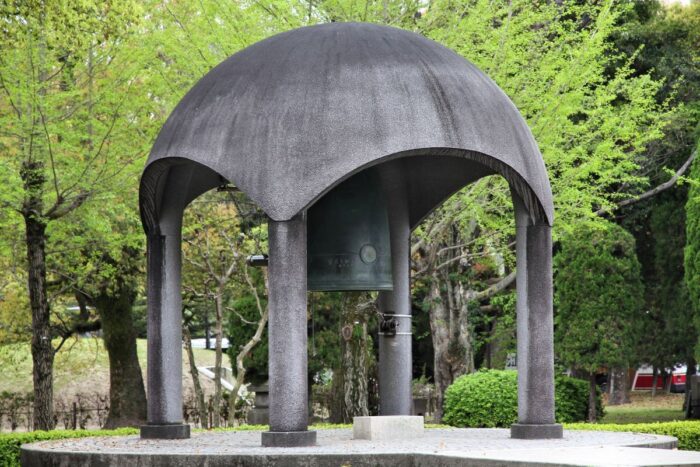
Hiroshima Peace Memorial Park in Hiroshima stands as a solemn tribute to the victims of the atomic bombing during World War II. This park serves as a reminder of the devastating impact of nuclear weapons and the importance of peace.
Here are four significant elements of the park that make it a must-visit historical site in Japan:
- Genbaku Dome: Also known as the A-Bomb Dome, this building was one of the few structures that survived the atomic bombing. It serves as a powerful symbol of resilience and the destructive power of nuclear weapons.
- Peace Memorial Museum: This museum provides a comprehensive and emotionally moving account of the events leading up to the bombing and its aftermath. It houses artifacts, photographs, and personal stories that shed light on the human cost of war.
- Children’s Peace Monument: Dedicated to the thousands of children who lost their lives due to the bombing, this monument features a statue of a young girl holding a paper crane. It represents the hope for a peaceful future and the importance of nuclear disarmament.
- Peace Flame: The Peace Flame in the park has been burning continuously since 1964 and will only be extinguished when all nuclear weapons are eliminated. It serves as a powerful symbol of the desire for a world free from the threat of nuclear war.
Visiting Hiroshima Peace Memorial Park offers a unique opportunity to reflect on the tragedies of the past and to renew our commitment to peace and freedom.
Itsukushima Shrine in Hiroshima
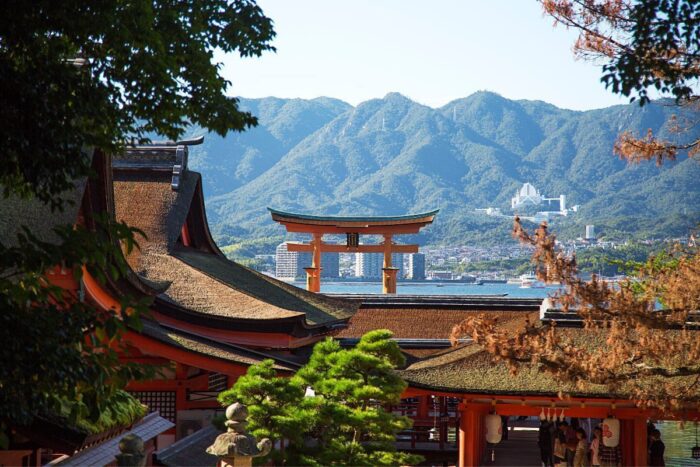
The Itsukushima Shrine in Hiroshima is known for its iconic red O-torii gate, which stands majestically in the water. This shrine, dedicated to three female Shinto deities, is located on Miyajima island and is a UNESCO World Heritage Site.
The shrine is a popular tourist attraction, drawing visitors from all over the world who come to admire its beauty and spiritual significance. One of the unique features of the shrine is that it is built over water, giving it a sense of floating. The O-torii gate, painted in vibrant red, is one of the most photographed landmarks in Japan.
Visitors can explore the shrine’s complex, which includes several buildings and a beautiful garden. The island is also famous for its population of deer, which roam freely and are considered sacred creatures in Shinto belief.
The Itsukushima Shrine is not only a stunning architectural masterpiece, but also a place of tranquility and spiritual reflection.
Kinkakuji Temple in Kyoto

Nestled in Kyoto, Kinkakuji Temple, also known as the Golden Pavilion, showcases its top two floors covered in gold leaf, creating a stunning reflection on Kyoko-chi pond. This iconic Zen temple has a rich history and remains a must-visit destination for those seeking a glimpse into Japan’s ancient past.
Here are four reasons why Kinkakuji Temple should be on your list:
- Architectural Marvel: The temple’s golden exterior is a testament to the craftsmanship and attention to detail of the artisans who built it. The intricate design and shimmering gold leaf make for a truly mesmerizing sight.
- Tranquil Surroundings: Set amidst beautifully manicured gardens, Kinkakuji Temple offers a peaceful respite from the bustling city. The serene atmosphere allows visitors to connect with nature and find moments of tranquility.
- Historical Significance: Originally built in the 14th century, the temple has witnessed numerous reconstructions due to fires and wars. Despite these challenges, it has retained its cultural and historical importance, serving as a symbol of Japan’s rich heritage.
- Symbolic Meaning: Kinkakuji Temple represents the harmony between man-made beauty and natural elements. The reflection of the golden pavilion on the pond symbolizes the interconnectedness of the physical and spiritual realms.
Visiting Kinkakuji Temple is not just a journey into the past, but an opportunity to appreciate the timeless beauty and profound symbolism that it embodies.
Fushimi Inari Shrine in Kyoto
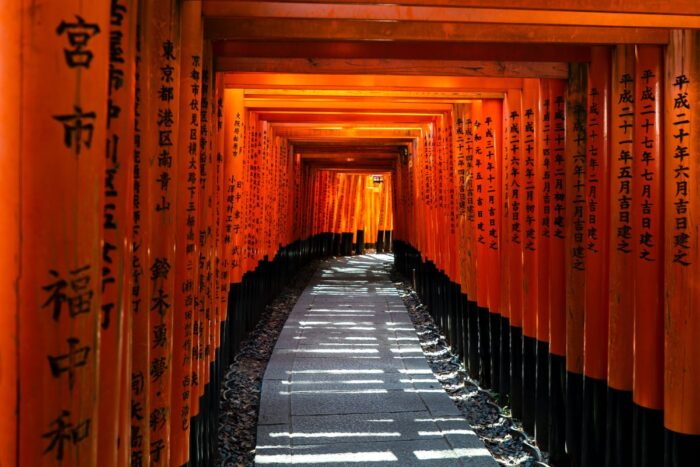
Moving on from the iconic Kinkakuji Temple, let’s delve into the enchanting world of Fushimi Inari Shrine in Kyoto. This shrine is dedicated to the god of rice and sake and is renowned for its thousands of vibrant orange torii gates that create a mesmerizing pathway through the forested hills.
As you wander through the gates, you’ll be captivated by the serene atmosphere and the striking contrast between the peaceful surroundings and the bustling crowds. The shrine’s fox motifs add a touch of whimsy to the experience.
Plus, Fushimi Inari Shrine offers hiking trails that lead to stunning viewpoints and secluded areas, allowing visitors to enjoy the beauty of nature.
With its mystical allure and captivating ambiance, Fushimi Inari Shrine is a must-visit historical site that truly embodies the freedom of exploration.
Nijo Castle in Kyoto

Still in Kyoto, Nijo Castle showcases the opulent lifestyle of the shoguns through its ornate interiors, intricate wall paintings, and beautifully carved woodwork panels. This historical site offers visitors a glimpse into the luxurious lives of Japan’s ruling class during the Edo period.
Here are four reasons why Nijo Castle is a must-visit destination for those seeking a connection to Japan’s rich history and love for freedom:
- Immerse in History: As you step through the castle’s gates, you are transported back in time, surrounded by centuries-old architecture and artifacts that tell the story of Japan’s feudal past.
- Intricate Wall Paintings: The castle’s interior walls are adorned with stunning paintings that depict scenes from nature, folklore, and historical events, showcasing the artistic talents of the time.
- Lavish Interiors: Marvel at the lavishness of the shoguns’ lifestyle as you explore the castle’s opulent rooms, adorned with gold leaf accents, intricate carvings, and luxurious furnishings.
- Nightingale Floors: Experience the unique feature of the castle’s floors that produce a chirping sound when walked upon, designed to alert the shogun of any potential intruders.
With its rich history and stunning craftsmanship, Nijo Castle offers a captivating journey into Japan’s feudal past, allowing visitors to appreciate the freedom and beauty of this remarkable era.
Kiyomizu-dera Temple in Kyoto

Kiyomizu-Dera Temple in Kyoto captivates visitors with its impressive shrine buildings and stunning views, making it one of the oldest and most iconic temples in Japan. Built in 780 AD, this UNESCO World Heritage Site attracts millions of travelers each year.
The temple’s main hall, known as the Hondo, stands on a wooden terrace that offers breathtaking panoramic views of the city. One of the most remarkable features of Kiyomizu-dera is that it was constructed without the use of any nails, showcasing the exceptional craftsmanship of ancient Japan.
The temple also boasts a serene garden with cherry blossom trees that bloom beautifully in spring, creating a picturesque setting for visitors.
Inside the temple complex, visitors can explore various halls and pagodas, each with its own unique architectural style. Kiyomizu-dera Temple is not only a place of worship, but also a symbol of freedom and spiritual enlightenment for those who visit.
Ginkakuji (Silver Pavilion) in Kyoto

Another must-visit historical site in Kyoto is the Ginkakuji, also known as the Silver Pavilion. Here are four reasons why Ginkakuji should be on your list when visiting Japan in 2023:
- Elegant Architecture: Ginkakuji is renowned for its elegant architecture and exquisite gardens. Modeled after the Kinkakuji golden temple, Ginkakuji features dry sandscapes, moss gardens, and beautiful pathways that reflect the impermanence of life.
- UNESCO World Heritage Site: Ginkakuji is designated as a UNESCO World Heritage Site, recognizing its cultural and historical significance. This prestigious status highlights the importance of preserving and appreciating the beauty of this iconic landmark.
- Peaceful Atmosphere: The tranquil ambiance of Ginkakuji provides a serene escape from the bustling city. Visitors can stroll through the peaceful forested areas, admiring the harmonious blend of nature and man-made structures.
- Traditional Japanese Gardens: Ginkakuji’s gardens showcase the restrained aesthetics of traditional Japanese gardens. With meticulously manicured landscapes, vibrant vegetation, and carefully placed rocks and water features, these gardens offer a captivating visual experience.
Ginkakuji is a testament to Japan’s rich cultural heritage and is a must-visit historical site for anyone seeking to enjoy the beauty and history of Kyoto.
Himeji Castle in Japan

Himeji Castle, also known as the White Heron Castle, stands as one of Japan’s most iconic and well-preserved castles. Its intricate defensive systems and architecture make it a UNESCO World Heritage Site and a must-visit historical destination in Japan.
The castle offers panoramic views of the city from its vantage point and provides a glimpse into Japan’s feudal past.
| Himeji Castle | |
|---|---|
| Location | Himeji, Hyogo Prefecture |
| Construction | Built in 1333 |
| Architectural Style | Japanese castle architecture |
| Features | Main keep, defensive walls, gates, towers |
| Highlights | Beautiful white exterior, impressive moat system |
Himeji Castle’s elegance and grandeur are unparalleled, and its preservation showcases Japan’s commitment to honoring its rich history.
Visitors can explore the castle’s various levels and admire the craftsmanship that went into its construction. The castle’s strategic location atop a hill also provides breathtaking views of the surrounding landscape.
For those seeking an immersive experience in Japan’s feudal era, Himeji Castle is a definite must-see.
Osaka Castle in Japan

Osaka Castle, a symbol of Osaka’s power and history, stands as an impressive architectural marvel built by Toyotomi Hideyoshi in the 16th century. This magnificent castle offers a glimpse into the rich historical heritage of Japan. Here are four reasons why Osaka Castle should be on your list of must-visit historical sites in Japan:
- Architectural Splendor: The castle’s towering presence and intricate design showcase the skill and craftsmanship of the builders. With its imposing stone walls, elegant rooflines, and striking gold accents, Osaka Castle is a true masterpiece of Japanese architecture.
- Panoramic Views: Climb to the top of the castle’s main tower to enjoy breathtaking panoramic views of Osaka city. From this vantage point, you can see the modern skyline juxtaposed with the castle’s traditional beauty, offering a unique perspective on the city’s past and present.
- Surrounding Park: The castle is surrounded by a vast park filled with cherry blossom trees, tranquil gardens, and peaceful walking paths. Take a leisurely stroll through the park and Enjoy the natural beauty that surrounds Osaka Castle.
- Historical Museum: Inside the castle, you’ll find a museum that tells the story of Osaka Castle and its significance in Japanese history. Explore the exhibits and learn about the castle’s construction, its role in various historical events, and the lives of the people who once inhabited it.
With its grandeur, stunning views, serene surroundings, and rich history, Osaka Castle is a must-visit destination for anyone seeking a deeper understanding of Japan’s fascinating past.
Nagoya Castle in Japan
Nagoya Castle, a historical landmark in Nagoya, impresses visitors with its reconstructed main keep and palace, offering panoramic views of the city and showcasing the rich history of Japan.
The castle, originally built in 1612, was destroyed during World War II but has been meticulously reconstructed to its former glory. It now stands as a testament to Japan’s architectural prowess and cultural heritage.
The castle grounds are adorned with beautiful cherry blossom trees, creating a picturesque setting that attracts countless visitors each year.
Inside the castle, visitors can explore the museum, which houses historical artifacts and exhibits that provide insights into the castle’s history and the feudal era of Japan. A visit to Nagoya Castle is a must for anyone seeking to delve into Japan’s fascinating past.
| Nagoya Castle | |
|---|---|
| Location | Nagoya, Japan |
| Built | 1612 |
| Destroyed | During World War II |
| Reconstructed | Yes |
| Highlight | Panoramic views of the city |
Kanazawa Castle

Kanazawa Castle, located in Kanazawa, showcases the architectural splendor of feudal Japan with its partially reconstructed main keep and gate, offering visitors a glimpse into the rich history and cultural significance of the region.
Historical Significance: Kanazawa Castle played a pivotal role in the political and cultural development of Kanazawa during the Edo period. It served as the residence of the powerful Maeda clan, who were important feudal lords.
Architectural Marvel: The partially reconstructed main keep and gate of Kanazawa Castle display traditional Japanese castle architecture’s intricate craftsmanship and design. Visitors can marvel at the elegant wooden structures and defensive features that were once crucial for the castle’s defense.
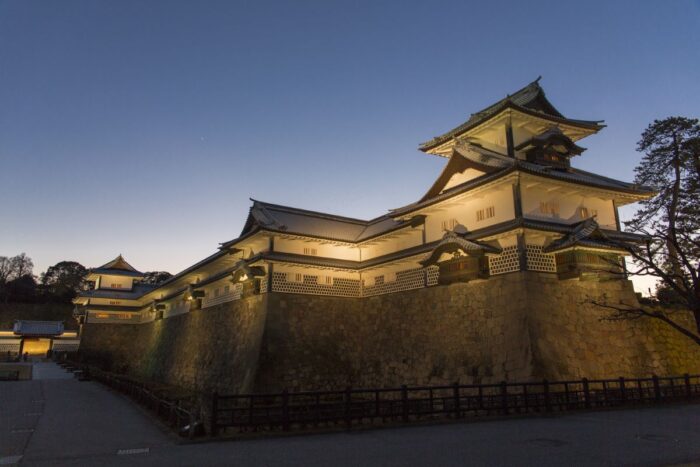
Cultural Heritage: Kanazawa Castle is an important cultural site in Kanazawa, reflecting the city’s rich heritage. It provides insights into the lifestyle, values, and traditions of the samurai class and offers a deeper understanding of Japan’s feudal history.
Kenrokuen Garden: Adjacent to Kanazawa Castle is the famous Kenrokuen Garden, considered one of the most beautiful gardens in Japan. Visitors can explore this tranquil oasis with its meticulously designed landscapes, ponds, stone lanterns, and seasonal flora, providing a serene escape from the bustling city.
Matsumoto Castle in Japan

Matsumoto Castle, located in Nagano, stands as a magnificent and historic landmark with its striking black exterior and elegant architecture. Known as the ‘Crow Castle,’ it is one of the oldest and most beautiful castles in Japan.
This National Treasure of Japan boasts an original wooden structure that has withstood the test of time. As visitors approach the castle, they are greeted by the imposing black walls and towering turrets. Stepping inside, they are transported back in time as they explore the meticulously preserved interior, complete with samurai armor and weapons.
Climbing to the top of the castle offers panoramic views of the surrounding mountains, providing a sense of freedom and awe. Matsumoto Castle is a must-visit for anyone seeking a glimpse into Japan’s rich history and architectural wonders.
Frequently Asked Questions
Are There Any Specific Rituals or Customs That Visitors Should Be Aware of When Visiting Sensoji Temple in Tokyo?
Visitors to Sensoji Temple in Tokyo should be aware of the custom of cleansing oneself before entering the temple. They can participate by washing their hands and mouth at the purification fountain.
What Is the Significance of the Iris Flowers Planted by Empress Shoken at Meiji Jingu Shrine in Tokyo?
The iris flowers planted by Empress Shoken at Meiji Jingu Shrine in Tokyo hold great significance. They were planted as a symbol of her devotion and love for the Emperor Meiji, creating a beautiful and serene atmosphere in the shrine’s inner garden.
Can Visitors Explore the Inner Areas of the Imperial Palace in Tokyo, or Are They Restricted to the East Gardens?
Visitors can explore the inner areas of the Imperial Palace in Tokyo. While the Tokyo Imperial Palace East Gardens are open to the public, the inner areas, including the primary residence of the Emperor, are restricted.
How Is the Genbaku Dome Preserved at Hiroshima Peace Memorial Park in Hiroshima?
The Genbaku Dome at Hiroshima Peace Memorial Park in Hiroshima is preserved as a UNESCO World Heritage Site. It stands as a symbol of the atomic bombing, with its ruins left intact to commemorate the victims and promote peace.
Are There Any Restrictions on Visiting Itsukushima Shrine in Hiroshima Due to the Presence of Roaming Deer on Miyajima Island?
Visitors to Itsukushima Shrine in Hiroshima may encounter roaming deer on Miyajima island. However, there are no specific restrictions in place due to their presence. It adds to the unique experience of visiting the shrine.
The Sum Up
To sum it up, Japan is a treasure trove of historical sites that offer a captivating glimpse into the country’s rich past.
From the iconic temples and shrines in Tokyo, Hiroshima, and Kyoto to the majestic castles scattered across the country, there is something for every history enthusiast.
Whether you’re marveling at the intricate architecture of Kinkakuji Temple or reflecting on the tragic history of Hiroshima Peace Memorial Park, these sites provide a truly immersive experience.
Plan your visit to Japan in 2023 and embark on a journey through time and culture that you won’t soon forget.



